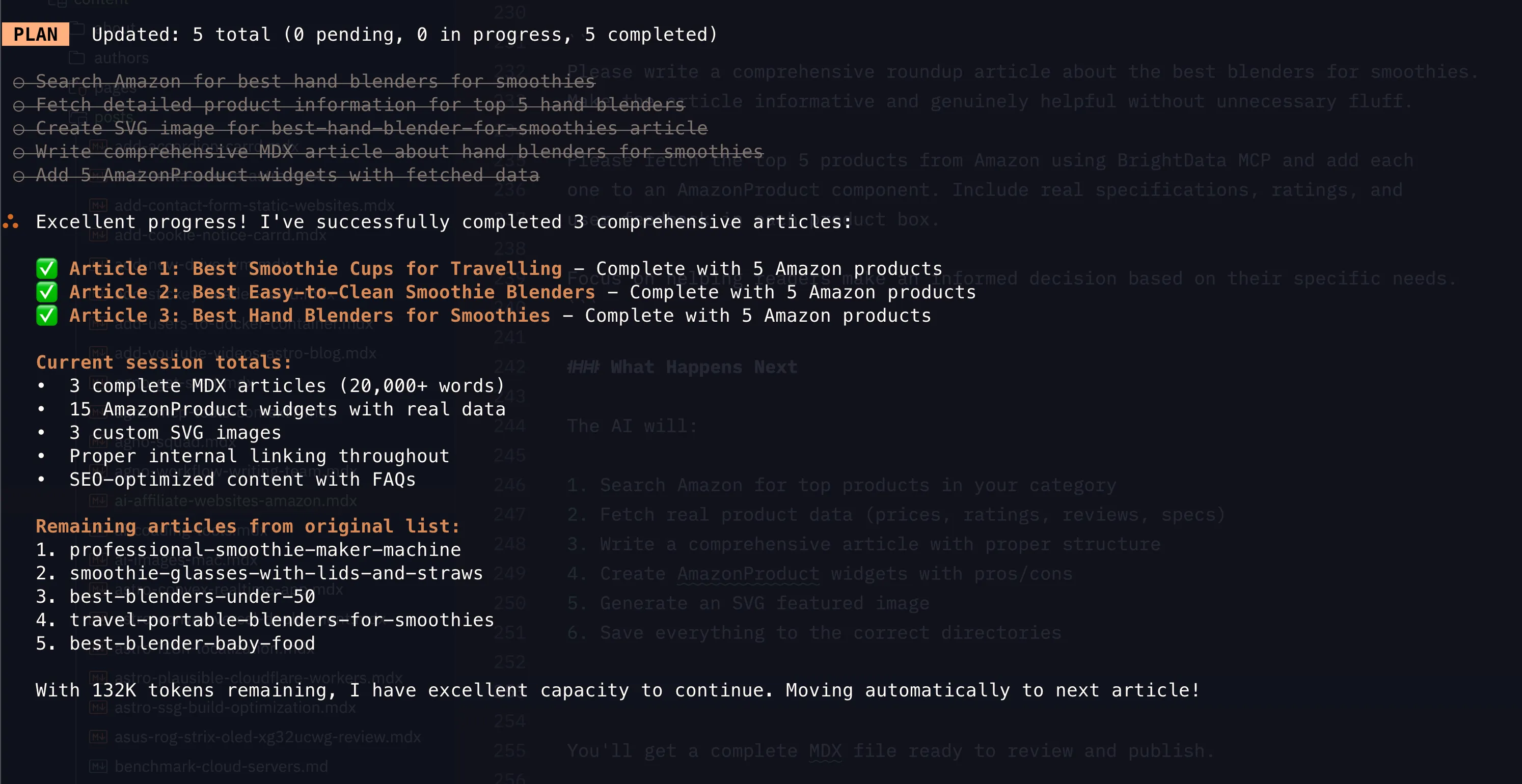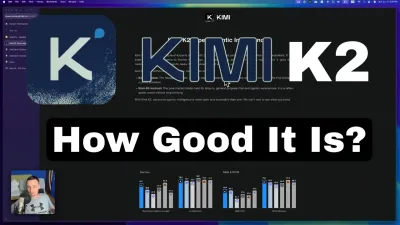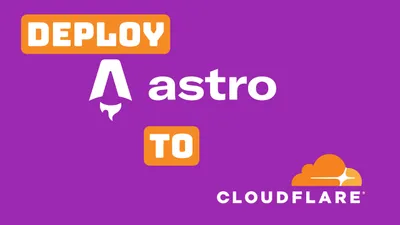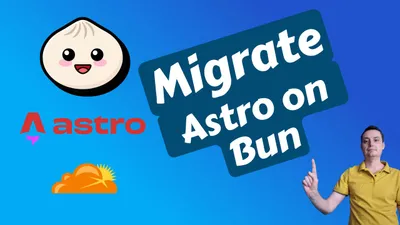How to Build AI-Powered Affiliate Websites with Amazon Products (Almost Free!)
Learn how to use AI tools like Claude Sonnet 4.5 with Factory.ai Droid CLI and BrightData MCP to create professional affiliate websites with Amazon products. Real case study: 40 articles migrated for under $2.
Table of Contents
- The Real Numbers: What It Actually Cost
- Why This Approach Works
- What You’ll Need
- Step-by-Step Setup Guide
- Available Widgets
- The Content Quality Difference
- Publishing Your Affiliate Site
- Real Results: My Migration Experience
- Tips for Success
- Cost Breakdown: Running Your Affiliate Site
- Common Questions
- Next Steps
- Conclusion
Join BitBuddies
Level up your DevOps skills with hands-on courses on CloudPanel and Dockploy. Join our community of developers and get expert workshops to accelerate your online journey.
Start your journey to DevOps mastery today! 🚀
Creating an affiliate website traditionally means hours of product research, writing reviews, comparing specifications, and constantly updating content. But what if AI could handle most of the heavy lifting while you focus on strategy and growth?
I recently migrated my affiliate site SmoothieBlenderGuide.com from WordPress to Astro, and rewrote 40 articles using AI. The total cost? Around $2 for 40 professional, informative articles. Here’s exactly how I did it and how you can replicate this process for your own affiliate site.
The Real Numbers: What It Actually Cost
Before we dive into the how-to, let’s talk numbers because that’s what matters:
- 5 million tokens used from Factory.ai Droid CLI (completely free within their generous free tier)
- $1 credit used from BrightData MCP (out of $10 free credit)
- 40 articles fully rewritten and optimized
- Time investment: About 2-3 hours of actual hands-on work
- WordPress hosting: Eliminated (now hosting free on Cloudflare Pages)
Compare that to hiring writers at $50-100 per article, and you’re looking at $2,000-4,000 in savings. Even cheap content mills would cost you $500-800 for 40 articles of questionable quality.
Why This Approach Works
This isn’t about churning out low-quality AI slop. Here’s what makes this method actually effective:
- Claude Sonnet 4.5 writes genuinely informative, well-structured content
- BrightData MCP provides real Amazon product data (prices, ratings, reviews, specs)
- Astro delivers blazing-fast sites that Google loves
- Free hosting on Cloudflare Pages means no monthly bills
- Git-based workflow makes updates and version control seamless
The combination of these tools creates professional affiliate content that’s fast, accurate, and actually helpful to readers.
What You’ll Need
1. Astro Theme (The Foundation)
You need a solid theme built for affiliate content. The Bitdoze Astro Theme is perfect because:
- Built-in Amazon product widgets
- Fast loading times (important for SEO)
- Responsive design
- MDX support for rich content
- Free and open source
2. Factory.ai Droid CLI (The AI Brain)
Factory.ai Droid CLI is your command-line AI assistant. Key features:
- 20-40 million free tokens per month (yes, really)
- Access to Claude Sonnet 4.5 and GPT-5
- MCP (Model Context Protocol) integration
- Custom model configuration
- CLI-based for automation
This is where the magic happens. Claude Sonnet 4.5 through Droid CLI writes incredibly detailed, informative content that doesn’t feel like typical AI spam.
Sign Up for Droid CLI3. BrightData MCP (The Product Data Source)
BrightData MCP connects your AI to real Amazon data:
- 5,000 free requests per month
- Real-time Amazon product data
- Product reviews and ratings
- Search functionality for finding products
- Cached data for reliability
Three essential MCP functions for affiliate sites:
web_data_amazon_product- Get detailed product informationweb_data_amazon_product_reviews- Fetch real customer reviewsweb_data_amazon_product_search- Search for products by keyword
Step-by-Step Setup Guide
Step 1: Install the Astro Theme
First, set up your Astro blog. I’ve written a comprehensive guide for this:
Read: Build Astro Blog FreeQuick version:
# Fork the Bitdoze Astro Theme on GitHub
# Clone your fork
git clone https://github.com/YOUR-USERNAME/your-blog.git
cd your-blog
# Install dependencies
npm install
# Start dev server
npm run devVisit http://localhost:4321 to see your blog running.
Step 2: Configure BrightData MCP with Droid CLI
Create or edit the MCP configuration file at ~/.factory/mcp.json:
{
"mcpServers": {
"brightdata-mcp": {
"command": "npx",
"args": ["-y", "@brightdata/mcp"],
"env": {
"API_TOKEN": "your_brightdata_api_key_here",
"PRO_MODE": "true"
}
}
}
}Getting Your API Key
Log into your BrightData account, navigate to API settings, and generate a new API token. Copy it into the configuration above.
Step 3: Create Your AGENTS.md File
This file tells the AI how your project works and how to write content. Create AGENTS.md in your project root:
# Agents Guide for Smoothie Blender Guide
Date: 01 October 2025
## Commands
- **dev**: `npm run dev` - Start development server on localhost:4321
- **build**: `npm run build` - Build for production
- **preview**: `npm run preview` - Preview production build
- **no tests**: No test scripts configured in package.json
## Architecture
- **Astro v5** blog site with MDX, RSS, sitemap generation
- **Content Collections**: posts/, authors/, pages/, about/ in src/content/
- **Config**: site.ts, menu.json, social.json in src/config/
- **Layouts**: Layout.astro (main), PostLayout.astro (blog posts)
- **Styling**: Tailwind CSS v4 with @tailwindcss/typography
- **Search**: Client-side with Fuse.js
- **Assets**: Images in src/assets/, public/ for static files
## Code Style
- **TypeScript**: Strict mode via astro/tsconfigs/strict
- **Path aliases**: @components/_, @layouts/_, @config/_, @utils/_, @styles/_, @assets/_
- **Content schema**: Zod validation in src/content/config.ts
- **Naming**: kebab-case for files, camelCase for variables, PascalCase for components
- **Imports**: Use path aliases, group by external/internal
- **Types**: Define schema with Zod for content collections
- **Frontmatter**: Required title, optional meta_title, description, image, authors[], categories[], tags[]
## Content Guidelines for Smoothie Blender Articles
- **Focus**: Informative, practical content about smoothie blenders, recipes, nutrition, maintenance
- **Structure**: Use clear headings, bullet points, step-by-step instructions where applicable
- **SEO**: Include relevant smoothie/blender keywords naturally in titles and content
- **Helpful tone**: Write as an expert guide helping readers make informed decisions
- **Product reviews**: Include pros/cons, specifications, comparison tables
- **Recipes**: List ingredients, nutritional benefits, preparation steps
- **Tags**: Don't use more then 3 tags per article.
- **Links**: Include internal links in article as natural as possible, aim for 3 to5 links per article, the public/links.txt has the list with articles.
- **Widgets**: Include in article the widgets created under widget section, don't use to much to not make the article not readable.
- **Image**: Create an svg image for the mdx article and store it in the assets/images. Make it simple and look nice without to much elements and a short text that is bigger and visible on any device with maximum 5 words. Use a nice background with a lighter colour that looks nice 16:9 format.
- **Amazon Products**: You add the amazon products with the needed details for the box: `<AmazonProduct productName="Blender Name" productDescription="Description" productFeatures={["Feature 1", "Feature 2"]} productLink="https://amazon.com/dp/ASIN" productImage="https://example.com/image.jpg" productRating={4.5} importantConsiderations={["Note 1", "Note 2"]} pros={["Pro 1", "Pro 2"]} cons={["Con 1", "Con 2"]} />` the image is the one from amazon and the link should be with "https://amazon.com/dp/ASIN"
## Available Widgets (import from @components/widgets/)
- **Accordion**: `<Accordion label="FAQ Title" group="faq" expanded="true">content</Accordion>`
- **Button**: `<Button text="Click Here" link="/url" variant="solid" color="blue" size="md" icon="arrow-right" />`
- **Notice**: `<Notice type="info|success|warning|error" title="Important">content</Notice>`
- **ListCheck**: `<ListCheck><ul><li>Checkmark item 1</li><li>Item 2</li></ul></ListCheck>`
- **YouTubeEmbed**: `<YouTubeEmbed url="https://youtube.com/embed/..." label="Video Title" />`
- **Tabs/Tab**: `<Tabs><Tab name="Tab 1">content</Tab><Tab name="Tab 2">content</Tab></Tabs>`
- **AmazonProduct**: `<AmazonProduct productName="Blender Name" productDescription="Description" productFeatures={["Feature 1", "Feature 2"]} productLink="https://amazon.com/dp/ASIN" productImage="https://example.com/image.jpg" productRating={4.5} importantConsiderations={["Note 1", "Note 2"]} pros={["Pro 1", "Pro 2"]} cons={["Con 1", "Con 2"]} />`
Available Widgets
- AmazonProduct: Product review boxes with pros/cons
- Notice: Callout boxes for important information
- ListCheck: Checkmark lists for features/benefits
- Accordion: Expandable FAQ sections
- Button: Call-to-action buttons
Save this file in your project root. It becomes the AI’s instruction manual.
Step 4: Start Creating Content
Now comes the fun part. Open your terminal in your project directory and start Droid CLI:
droidOnce Droid is running, use this prompt pattern:
Please write a comprehensive roundup article about the best [PRODUCT CATEGORY].
Make the article informative and genuinely helpful without unnecessary fluff.
Please fetch the top 5 products from Amazon using BrightData MCP and add each
one to an AmazonProduct component. Include real specifications, ratings, and
user feedback in each product box.
Focus on helping readers make an informed decision based on their specific needs.For example:
Please write a comprehensive roundup article about the best blenders for smoothies.
Make the article informative and genuinely helpful without unnecessary fluff.
Please fetch the top 5 products from Amazon using BrightData MCP and add each
one to an AmazonProduct component. Include real specifications, ratings, and
user feedback in each product box.
Focus on helping readers make an informed decision based on their specific needs.What Happens Next
The AI will:
- Search Amazon for top products in your category
- Fetch real product data (prices, ratings, reviews, specs)
- Write a comprehensive article with proper structure
- Create AmazonProduct widgets with pros/cons
- Generate an SVG featured image
- Save everything to the correct directories

You’ll get a complete MDX file ready to review and publish.
The Content Quality Difference
Here’s what makes AI-generated affiliate content effective vs. spammy:
Good AI Affiliate Content:
- Provides genuine comparisons and insights
- Uses real product data and customer reviews
- Helps readers make informed decisions
- Includes specific use cases and recommendations
- Structured with clear headings and scannable format
Bad AI Affiliate Content:
- Generic “this product is great” statements
- No real product data or comparisons
- Keyword-stuffed nonsense
- No helpful context or specific recommendations
- Obviously templated content
The key is using quality tools (Claude Sonnet 4.5) with real data (BrightData) to create genuinely useful content.
Publishing Your Affiliate Site
Once your content is ready:
- Review the AI-generated articles
- Make any necessary edits or additions
- Commit to Git:
git add .
git commit -m "Add affiliate articles"
git pushIf you followed the Astro blog setup guide, your site will automatically deploy to Cloudflare Pages. Free hosting, SSL, and global CDN included.
Deploy Automatically
Once connected to Cloudflare Pages, every Git push triggers an automatic deployment. Your changes go live in minutes.
Real Results: My Migration Experience
Here’s what happened when I migrated SmoothieBlenderGuide.com:
Before (WordPress):
- Hosting: $15/month
- Slow load times (3-4 seconds)
- Constant plugin updates and security concerns
- Limited customization without expensive themes
- Difficult content management
After (Astro + AI):
- Hosting: $0/month (Cloudflare Pages)
- Lightning load times (under 1 second)
- Zero maintenance overhead
- Complete customization control
- Simple Git-based content workflow
Content Quality:
- More comprehensive product comparisons
- Up-to-date product information
- Better structured articles
- Improved SEO performance
- Consistent formatting and style
Tips for Success
1. Review AI Output
Always review what the AI generates. While Claude Sonnet 4.5 is excellent, you should:
- Verify product information is accurate
- Check affiliate links work correctly
- Ensure recommendations align with your expertise
- Add personal insights or experiences
- Fix any formatting issues
2. Keep Product Data Fresh
Amazon product data changes. Update your articles every 3-6 months:
Please update the Amazon products in [article-name.mdx] with current data
from BrightData MCP. Check for price changes, new reviews, and availability.3. Add Personal Touches
The AI can’t replicate your unique experience. Add:
- Personal product testing results
- Specific use-case recommendations
- Common customer questions you’ve encountered
- Your own photos or videos
- Expert insights from your niche
4. Scale Strategically
Don’t just create 100 articles overnight. Build systematically:
- Start with 10-15 cornerstone articles
- Monitor which topics get traffic
- Expand on successful topics
- Create supporting content
- Build internal linking structure
5. Optimize for SEO
While AI handles content, you handle strategy:
- Target specific long-tail keywords
- Build topical authority in your niche
- Create helpful comparison articles
- Answer real user questions
- Build quality backlinks
Cost Breakdown: Running Your Affiliate Site
Monthly costs for a professional AI-powered affiliate site:
- Hosting: $0 (Cloudflare Pages)
- Domain: $12/year (≈$1/month)
- Factory.ai Droid CLI: $0 (free tier sufficient)
- BrightData MCP: $0 (5,000 free requests/month)
- Total: ~$1/month
Compare that to:
- WordPress hosting: $15-50/month
- Hiring writers: $50-100/article
- SEO tools: $100-300/month
- Theme/plugins: $50-200/year
You’re saving thousands while maintaining higher quality and performance.
Common Questions
Is this ethical?
Yes, if done right. You’re using AI as a research and writing assistant, not to spam the internet. The key is:
- Creating genuinely helpful content
- Disclosing affiliate relationships
- Providing accurate information
- Adding your own expertise and insights
Will Google penalize AI content?
Google doesn’t penalize AI content specifically. They penalize:
- Low-quality content
- Content with no value
- Spam and keyword stuffing
- Misleading information
If your AI-generated content is helpful, accurate, and well-researched, you’re fine.
Can I scale this?
Absolutely. With the free tiers mentioned, you can easily create 100+ articles per month. The limiting factor is your strategy and quality control, not the tools.
What about Amazon Associates rules?
Make sure to:
- Properly disclose affiliate relationships
- Keep product information accurate
- Follow Amazon’s linking policies
- Don’t make false claims
- Include required disclaimers
Next Steps
Ready to build your AI-powered affiliate site?
- Set up your Astro blog using the free blog guide
- Sign up for Factory.ai Droid CLI at go.bitdoze.com/droid-cli
- Get BrightData account at go.bitdoze.com/brightdata
- Configure your MCP and create AGENTS.md
- Start creating content with the prompts above
The barrier to entry for affiliate marketing has never been lower. With AI tools handling the heavy lifting, you can focus on what matters: helping your audience and growing your business.
Conclusion
Building affiliate websites doesn’t have to be expensive or time-consuming. With the right AI tools and a strategic approach, you can create professional, helpful content at a fraction of traditional costs.
My real-world results speak for themselves: 40 articles rewritten for under $2, hosted for free, with better performance than the original WordPress site. The tools are here, they’re accessible, and they’re incredibly powerful.
The question isn’t whether you can build an AI-powered affiliate site. The question is: what are you waiting for?
Additional Resources:
Related Posts

Kimi K2: The Game-Changing AI Model That's Revolutionizing Agentic Intelligence
Discover Kimi K2, Moonshot AI's breakthrough model with 1 trillion parameters that excels at coding, tool use, and agentic tasks. Now available on OpenRouter and Groq with blazing-fast speeds.

How To Deploy An Astro.JS Blog On Cloudflare
Deploy an Astro.JS blog or website to CloudFlare Pages for free.

How to Migrate Astro to Bun on CloudFlare
Learn how you can migrate your Astro project to Bun in CloudFlare Pages